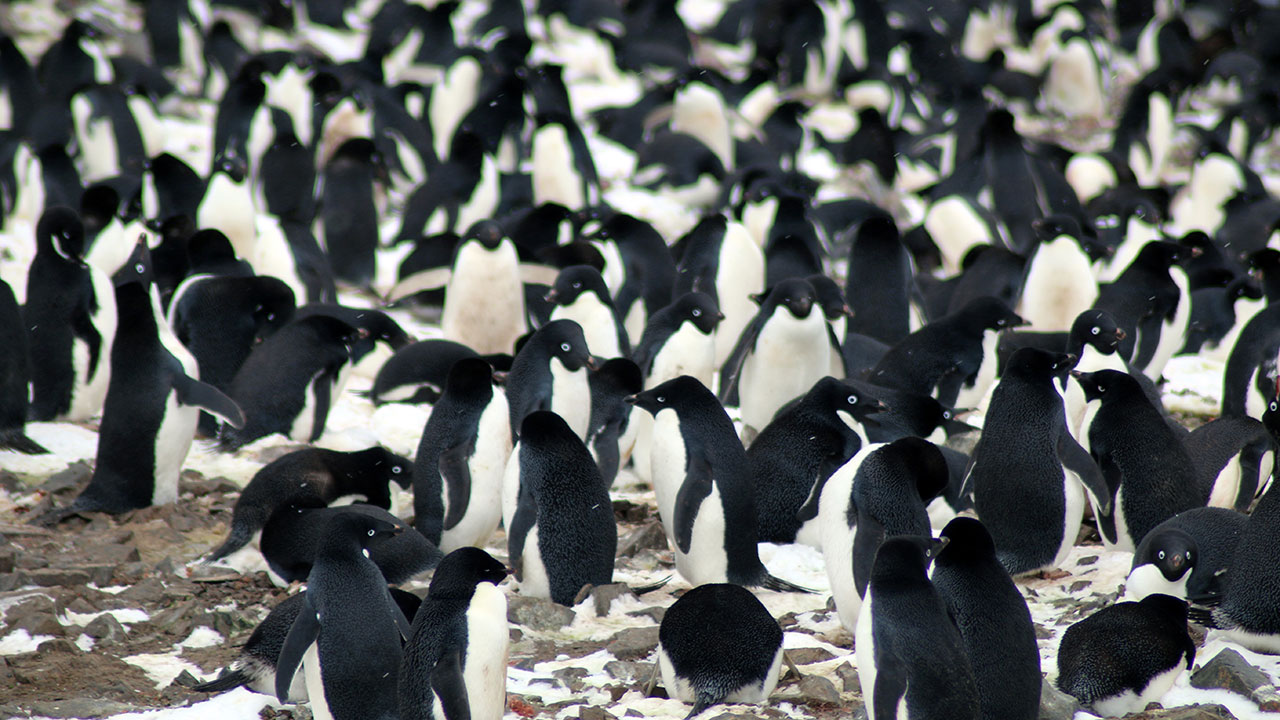
Supercolony of 1.5 million Adélie penguins found in Antarctica
Scientists have believed for decades now that the total number of Adélie Penguins has been on a steady decline. But now, experts at the Woods Hole Oceanographic Institution are reporting the discovery of a “supercolony” of more than 1.5 million Adélie Penguins located in a remote part of Antarctica known as the Danger Islands.
“Until recently, the Danger Islands weren’t known to be an important penguin habitat,” said co-author Heather Lynch. She explained that these supercolonies have gone undetected due to their remote location and also because of the dangerous conditions of the surrounding ocean, which is filled with thick sea ice even in the warm season.
In 2014, scientists noted guano stains in NASA satellite images of the islands, indicating the presence of a large number of penguins. An expedition was arranged for researchers to investigate the mysterious population of penguins firsthand.
When the team arrived at the Danger Islands in December of 2015, they witnessed hundreds of thousands of birds nesting and immediately began documenting them. The researchers also used a modified commercial quadcopter drone to capture images of the entire region.
Study co-author Hanumant Singh, a professor of Mechanical and Industrial Engineering at Northeastern University, developed the drone’s imaging and navigation system.
“The drone lets you fly in a grid over the island, taking pictures once per second. You can then stitch them together into a huge collage that shows the entire landmass in 2D and 3D,” explained Professor Singh.
According to Professor Singh, neural network software can then be used to break the images down pixel by pixel so the researchers are able to independently investigate the number of penguins and the locations of penguin nests.
“Not only do the Danger Islands hold the largest population of Adélie penguins on the Antarctic Peninsula, they also appear to have not suffered the population declines found along the western side of Antarctic Peninsula that are associated with recent climate change,” said co-author Mike Polito.
Seabird ecologist Stephanie Jenouvrier explained that an accurate count of the birds in this supercolony will provide a valuable guide for future climate change.
“The population of Adélies on the east side of the Antarctic Peninsula is different from what we see on the west side, for example. We want to understand why. Is it linked to the extended sea ice condition over there? Food availability? That’s something we don’t know.”
The study is published in the in the journal Scientific Reports.
—
By Chrissy Sexton, Earth.com Staff Writer
Image Credit: Michael Polito, © Louisiana State University













